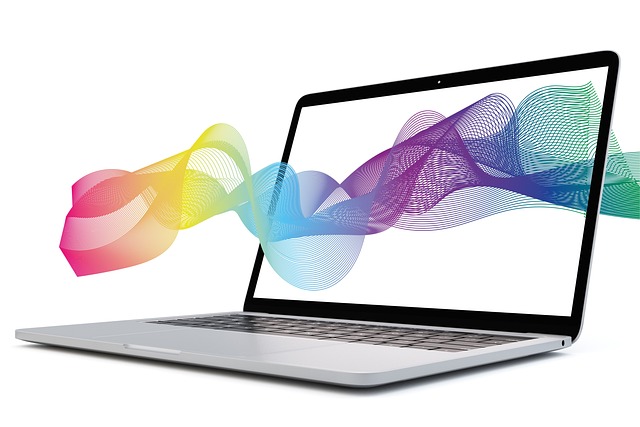AI Business Digital Twin technology is revolutionizing industries like retail and hospitality by creating digital replicas of physical operations for real-time simulation and analysis. Specifically, AI food cost control software utilizes machine learning to optimize resource allocation and predict issues throughout the supply chain, leading to significant cost reductions and enhanced efficiency. By leveraging vast data analysis, this software provides insights into inventory tracking, pricing trends, and waste areas, resulting in better operational visibility and informed decisions on menus, promotions, and supply chains. Through scenario simulation using digital twins, companies can identify inefficiencies and optimize operations, achieving predictive cost savings, risk-free testing of new strategies, and substantial long-term financial gains while minimizing environmental impact.
In today’s digital era, businesses are turning to AI business digital twin technology to gain a competitive edge. This innovative approach allows companies to create precise digital replicas of their physical operations, including complex food supply chains and cost structures. Understanding AI food cost control software is crucial for optimizing expenses and enhancing efficiency. By building and utilizing your own digital twin, you can make data-driven decisions that lead to significant cost savings, ensuring long-term success in a dynamic market.
- Understanding AI Business Digital Twin Technology
- Benefits of Implementing AI Food Cost Control Software
- Building and Utilizing Your Own Digital Twin for Cost Optimization
Understanding AI Business Digital Twin Technology

AI Business Digital Twin technology is a game-changing approach that offers unprecedented insights into various business processes, particularly in sectors like retail and hospitality, where managing costs is paramount. By creating a digital replica or ‘twin’ of an actual business operation, this technology enables companies to simulate and analyze every aspect of their physical assets and operations in real time. For instance, an AI food cost control software leveraging digital twins can model the entire supply chain, from sourcing ingredients to preparing dishes, and even customer demand patterns.
This simulation allows businesses to optimize resource allocation, predict potential issues, and make data-driven decisions to reduce costs and improve overall efficiency. Digital twin technology goes beyond simple visualization; it integrates machine learning algorithms to learn from historical data and adapt to changing conditions. This dynamic nature ensures that the digital model stays aligned with its physical counterpart, making it a powerful tool for businesses aiming to stay competitive in today’s fast-paced market.
Benefits of Implementing AI Food Cost Control Software

Implementing AI food cost control software offers significant advantages for businesses in the hospitality and retail sectors. This technology revolutionizes traditional cost management practices by leveraging machine learning algorithms to analyze vast amounts of data, providing insights that were previously difficult to obtain. With AI, businesses can automatically track inventory levels, monitor pricing trends, and identify waste hotspots with remarkable accuracy.
The benefits extend beyond mere cost savings. AI software empowers decision-makers with real-time visibility into their operations, enabling them to make informed adjustments to menus, promotions, and supply chains. This dynamic approach ensures that food costs remain optimized, enhancing profitability while also improving resource allocation efficiency and reducing environmental impact by minimizing waste.
Building and Utilizing Your Own Digital Twin for Cost Optimization

Building and utilizing your own digital twin can significantly optimize costs for businesses, especially in the realm of AI food cost control software. This technology involves creating a virtual representation of physical assets and processes, allowing companies to simulate and analyze various scenarios before implementing them in the real world. For instance, a restaurant or food manufacturing business can digitize its entire operation, from inventory management to production lines, and even employee shifts. By doing so, they gain insights into potential bottlenecks and inefficiencies that might lead to unnecessary expenses. With AI algorithms analyzing this digital twin, businesses can make data-driven decisions to streamline operations, reduce waste, and optimize resource allocation.
The process begins with gathering and integrating diverse data sources, such as sensor data, historical records, and real-time monitoring, into a unified digital model. Once the digital twin is established, AI models can predict and identify cost-saving opportunities. For example, they might suggest optimal inventory levels to minimize spoilage or recommend adjustments to production schedules to enhance throughput without additional labor costs. Moreover, digital twins enable businesses to quickly test new strategies or technologies in a risk-free environment, ensuring that decisions are informed and likely to yield positive results, ultimately leading to substantial long-term savings.
AI business digital twin technology, particularly in the context of AI food cost control software, offers significant advantages for optimization and efficiency. By building and utilizing digital twins, businesses can gain a profound understanding of their operations, leading to data-driven decisions that enhance profitability and resource management. Implementing this technology is a strategic move towards navigating the competitive landscape of today’s digital era, ensuring sustained success and a competitive edge.
